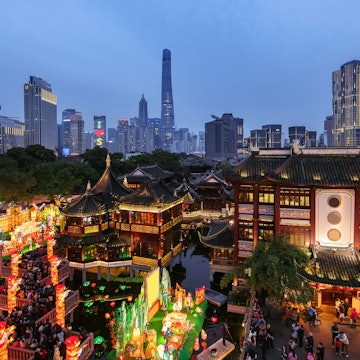
Discover the best of Shanghai with this 3-day itinerary


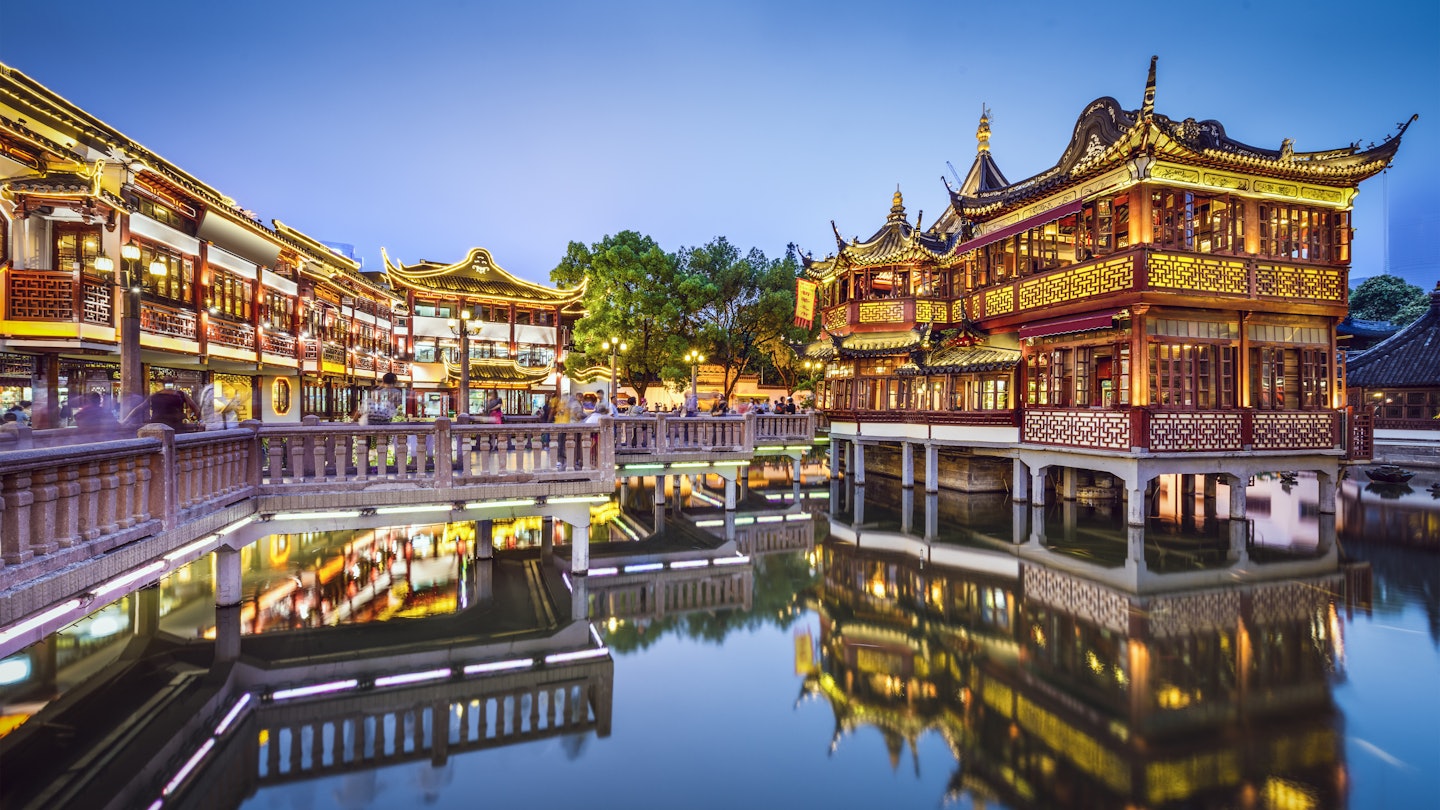
Shanghai is awash with striking historic and modern architecture. Sean Pavone/Shutterstock
Vast, fast-paced and steeped in history, Shanghai is the third-largest city on Earth, and an essential stop on any trip to the east coast of China. While the city dates back millennia, Shanghai expanded rapidly in the 16th century as a major port, attracting the attention of European empires, who established trading outposts known as “concessions” following the Opium Wars in the 1830s and 1850s.
These foreign enclaves were reclaimed by China in the 1940s, but they left the city with a remarkable collection of neoclassical and art deco buildings, a testament to the wealth that passed through Shanghai. The European era also saw the construction of whole districts of longtang (lanes), accessed via shikumen gatehouses. Today, these are some of the city’s most vibrant neighborhoods, studded with hip places to eat, drink and shop.
Beyond the history lies new Shanghai – a futuristic metropolis of towering glass skyscrapers and space-age monuments that have given the city one of the most recognizable skylines on the planet. Add in some of China’s most spectacular dining and shopping, and you’ll quickly understand why so many visitors come here, and why so many have chosen to stay.
Efficient public transport makes exploring this mega-city easy, but with so much to see and so much ground to cover, it pays to be selective, particularly if this is your first time in the city. Get the best from Shanghai by following this three-day itinerary, taking in the highlights.

When to arrive
The best time to come to Shanghai is during the spring – from April to May – or the fall – from September to October. The summer months from June to August can be uncomfortably hot and humid, while the winter months are cold, grey and gloomy. Spring and fall hit the sweet spot, with moderate temperatures and mostly dry skies. These are the peak seasons for tourism, with higher prices for flights and accommodation, but as a major international metropolis and hub for global finance and trade, Shanghai is busy year-round.
How to get around
Shanghai’s rapidly expanding metro and light railway system works like a dream; it’s fast, efficient and inexpensive, but it can get busy during the morning and afternoon rush hour. It pays to place yourself near the doors a few stops early to avoid missing your stop.
Taxis are plentiful and cheap, but finding a cab can be tricky at busy times. Locals use the Didi Chuxing app to summon a rideshare; foreigners may find it easiest to use the Didi mini-program inside the WeChat app. For both conventional taxis and rideshares, language can sometimes be an issue; unless you speak Mandarin, carry a business card or piece of paper with the name and address of your destination written in Chinese characters.

Public buses go almost everywhere, but they can be crowded and routes can be confusing if you don’t read or speak the language; in heavy traffic, the metro is usually a safer bet. Bikes can be rented for local exploring in areas such as the former French Concession, or you can use (with advance preparation) local bikeshare apps such as Meituan and Hellobike.
Don’t overlook the Huangpu River as a transport route. Various local ferries cross the river between Puxi on the west bank and Pudong on the east bank, including the Shanghai Ferry, which operates between the southern end of the Bund and Dongchang Rd Pier in Pudong, and the Fuxing Road Ferry, which runs from Fuxing Rd north of the Cool Docks in the South Bund area to Dongchang Rd.
What to pack
In Shanghai, you are at the cutting edge of China’s high-tech revolution, so almost anything you need can be found locally. Pack comfortable shoes for walking, bring a warmer layer for the evenings in spring or fall (or a coat, gloves and a hat for winter) and keep a folding umbrella handy (particularly in summer). If you brave the sticky months from June to August, pack light cotton clothing and sunscreen.
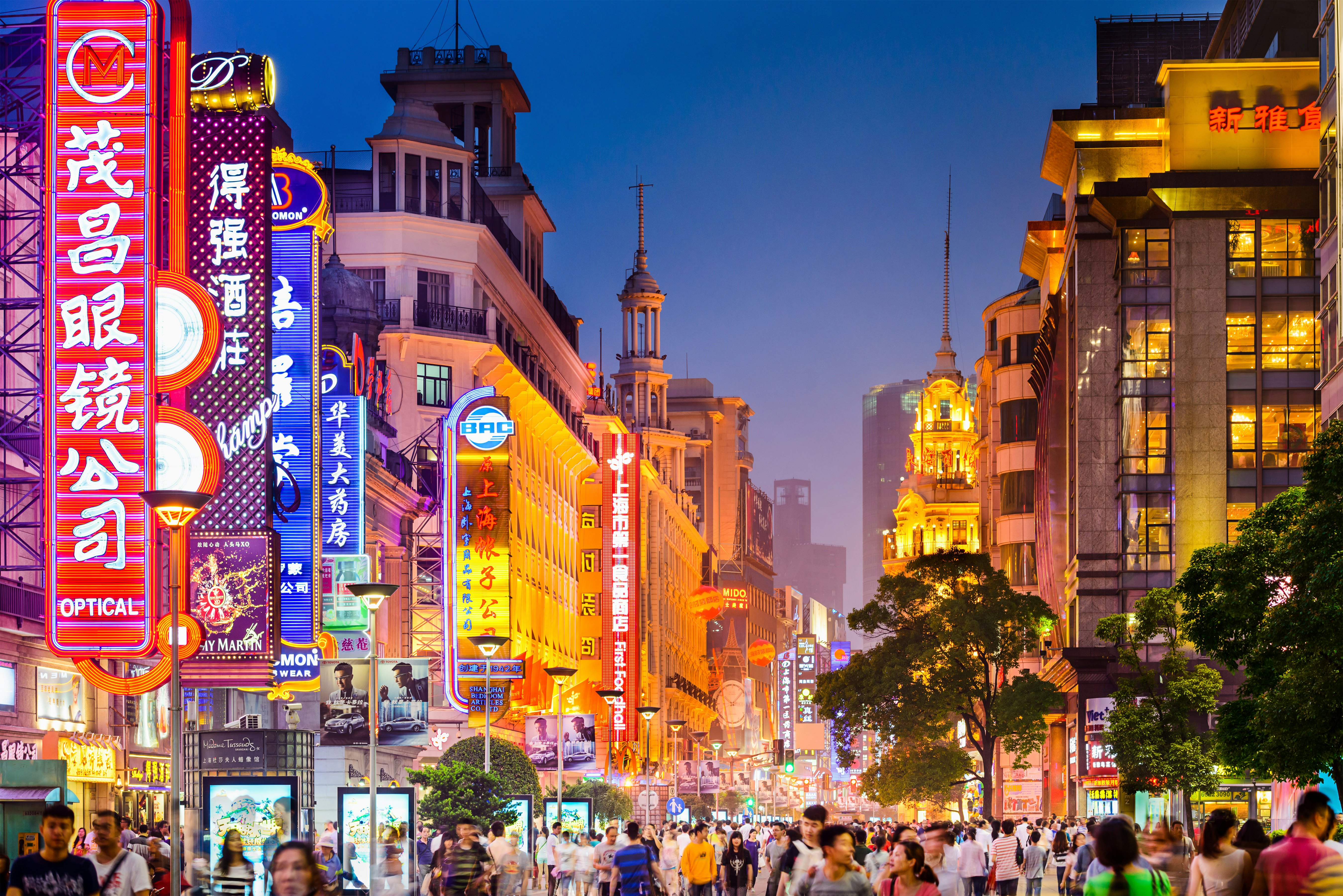
Day 1: Take in the sights around People’s Square and the Bund
How to spend the day: People’s Square (Renmin Guangchang) is one of Shanghai’s most iconic corners, an open space ringed by towering modern skyscrapers and beautifully designed art deco and neoclassical structures like the General Post Office Building. A large green park at the centre of the square offers leafy walks and respite from the urban clamor.
Be sure to drop into the Shanghai Museum – a remarkable cultural institution set in a building shaped like a traditional ding cooking vessel. Spread over four floors, the enormous and valuable collection spans Chinese paintings, seals, jade, ethnic costumes, Ming and Qing furniture, calligraphy and old coins. Allow at least a few hours to browse (there’s a tearoom-style restaurant for lunch).
Famous East Nanjing Rd runs northeast, transforming into a fluorescent forest of neon billboards after dark. This pedestrianized thoroughfare is crammed with big Chinese brands, but the upper levels of buildings hark back to the 1920s, when this was the prime shopping strip for the British and American concessions. Follow the road to the riverbanks for a killer view of futuristic Pudong across the Huangpu River – keep your camera handy.
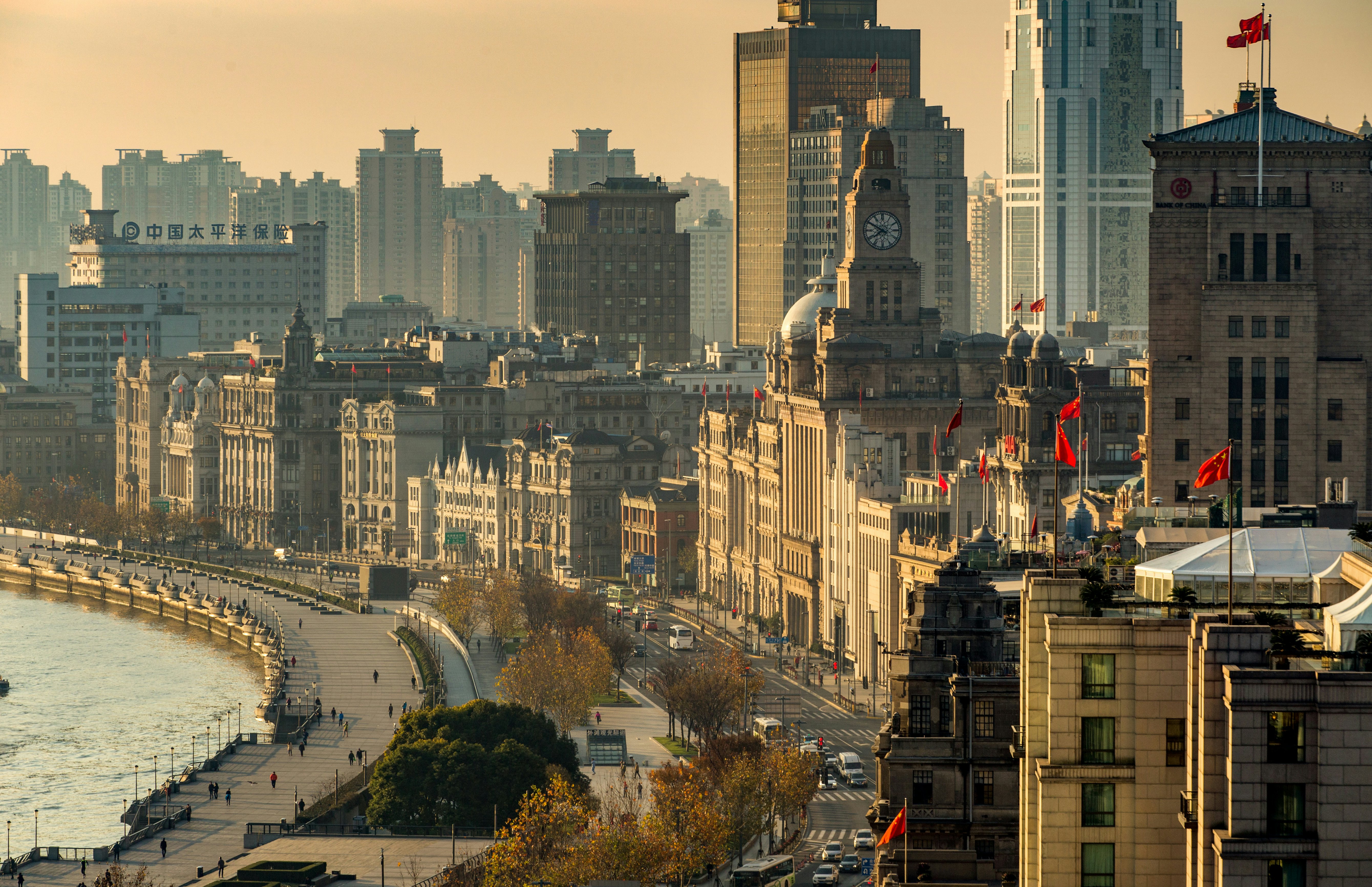
Use the afternoon to explore the wonderful riverfront promenade that is the Bund, once known as the “Wall Street of the Orient.” This is where some of the biggest trading companies of the 19th century went boom and bust in less than a century. A line of resplendent (and strikingly un-Chinese) art deco and neoclassical buildings sits as a reminder of Shanghai’s former status as a British colonial trading port.
Landmarks to look out for include the grand Fairmont Peace Hotel from 1929, founded as the Cathay Hotel, and the House of Roosevelt building at No 27, once the headquarters of the opium-trafficking company Jardine Matheson. Keep an eye out for the lion-flanked Bank of China building from 1935 and the Customs House at No 13, styled after London’s Big Ben in 1927. Look out for locals practicing taichi and flying colorful kites on the riverbank.
Before you wind up the day’s sightseeing, consider a cruise along the Huangpu River, either by tour boat or public ferry. Alternatively, take a surreal journey under the river via the Bund Sightseeing Tunnel (Waitan Guanguang Suidao), where electric pods transport passengers through a psychedelic underground light show.
Evening: Take advantage of the views from the Bund at night as the futuristic skyline of Pudong is brilliantly illuminated. For views to remember, visit the Char restaurant at the Indigo Hotel, climb to the terrace at the Captain’s Bar, or eat at swanky Three on the Bund, home to a suite of Michelin-starred restaurants that rank among the best in the city.

Day 2. Get a feel for Shanghai’s history in the French Concession or Xintiandi
How to spend the day: With leafy tree-lined avenues, 1920s mansions and French-influenced architecture, the former French Concession is the best preserved of Shanghai’s European enclaves, established in the 19th century to facilitate trade (and the extraction of wealth from China). Long since reclaimed by locals, this is the place to find a pocket of calm in Shanghai’s swirling modern metropolis.
This historic neighborhood is sprinkled with hidden traditional lane house complexes, pop-up independent fashion boutiques, uber-hip cafes, cocktail bars and an ever-rotating and inventive collection of restaurants.
Worthy lunch stops include Little Peach Garden on Middle Fuxing Rd, for steaming baskets of xiaolongbao dumplings, Imperial Noodle House on Changle Rd for handmade scallion oil noodles, Xiang Cai Ren Jia on North Xiangyang Rd for tasty scallion oil pancakes with eggs, and Jesse on Tianping Rd for Shanghainese treats such as salted chicken, liquor-soaked crab and braised pork.
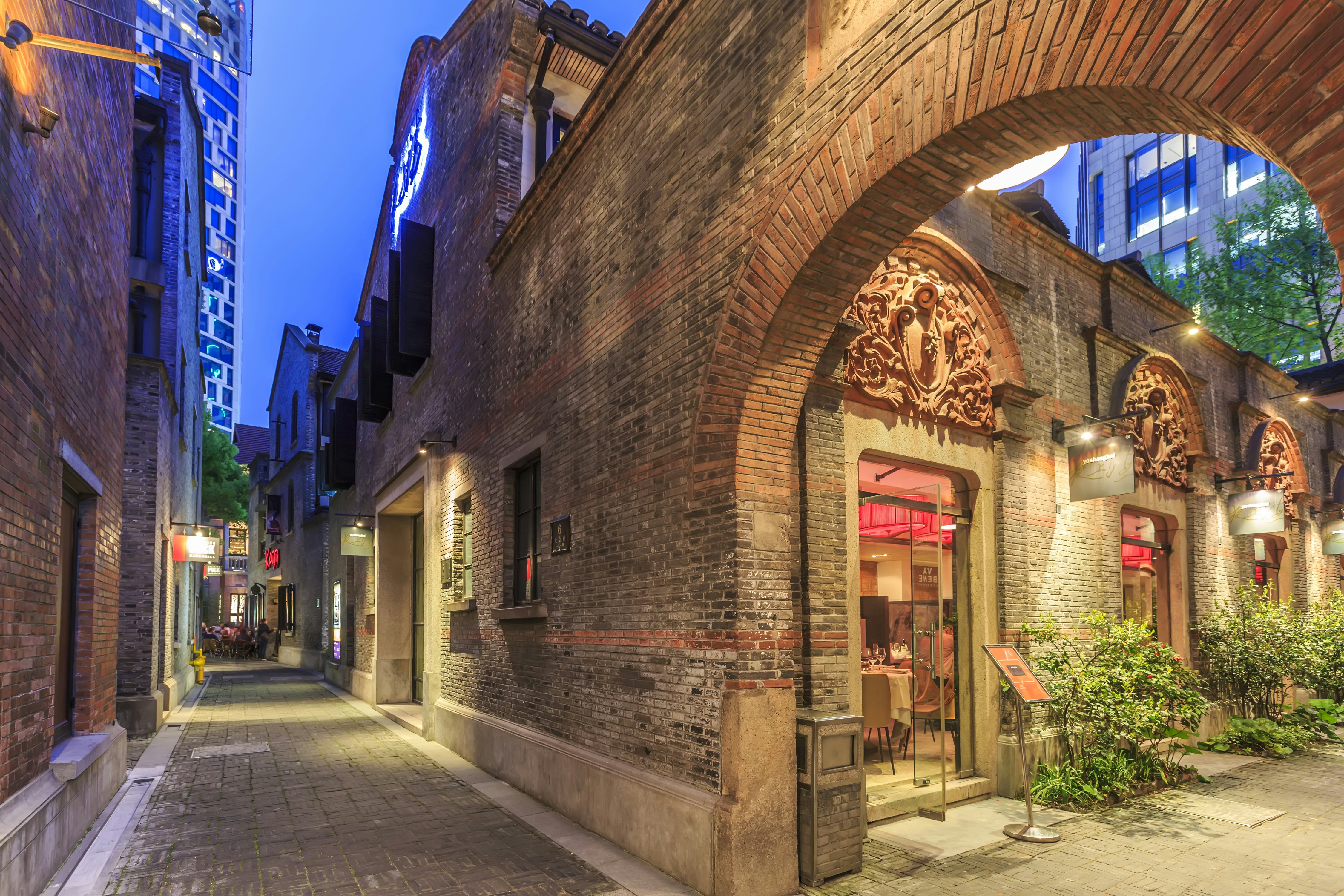
For a hint of the area’s history, drop by the Italianate, red-brick All Saints’ Church (1925), the modest residence used by “father of modern China” Sun Yatsen in the 1920s, the former home of Chinese painter Liu Haisu, and the striking art deco Cathay Theatre from 1932.
Nearby, the district of Tianzifang is notable for its shikumen architecture, with arched gateways leading to narrow lanes known as longtang. Constructed in the 1930s, the area is full of homes and local shops, alongside art studios and hole-in-the-wall bars, cafes and tea shops.
For an upmarket longtang experience, head to Xintiandi, a cluster of gentrified streets occupied by chic restaurants, cafes and boutiques. Good stops for an afternoon recharge include Peninsula Boutique & Cafe and French bistro Polux by Paul Pairet. Also here is the Site of the 1st National Congress of the Chinese Communist Party, with its oath-taking hall and museum on the modern history of Shanghai.

Go even further back in time with an afternoon detour to Jing’an, another historic neighborhood centered on the Jing’an Temple. Founded in 1216, this Buddhist shrine was transformed into a plastics factory during the Cultural Revolution, destroyed by a fire, before being restored to its original grandeur, complete with carving-topped pagoda roofs and wafting incense. Don’t miss the inexpensive Jen Dow Vegetarian Restaurant at the rear, serving up lip-smacking noodles with mushrooms.
While the European-influenced parts of Shanghai grab the limelight, hints of the old city live on in the Nanshi district, including traces of the 16th-century walls and a 13th-century Confucius Temple relocated here in the 1850s. Start exploring at the Yuyuan Gardens & Bazaar – an atmospheric sprawl of flower-filled gardens, historic pavilions and koi-filled ponds. Take a snack stop at the famous Mid-Lake Pavilion Teahouse from 1784, a popular spot for Shanghainese dishes like dumplings and hand-pulled noodles.
Evening: The former French Concession and Jing’an are great districts for dining. For heritage charm, book a table at the French Concession’s stylish Yongfoo Elite Residence or duck into the 1930s villa housing Fu 1088 in Jing’an. Alternatively, try inventive Chinese dishes served small-plate-style with natural wines at the provocatively named Bastard in Jing’an.

Day 3. Experience the future Shanghai in Pudong
How to spend the day: Pudong’s ever-busy international airport is where most international visitors touch down in Shanghai, and this ultra-modern district on the east bank of the Huangpu River shows off the city at its most dynamic. Neck-craning skyscrapers rise dramatically – some tall enough to pierce the clouds – creating an iconic skyline that is vividly illuminated by night.
Gazing in the opposite direction, you’ll get a spectacular view of the Bund, with its European-inspired towers looking elegant but rather small and outdated compared to the glass towers on the Pudong side. Be sure to take in the evening view from the Bund toward Pudong before you come, as a warm-up for exploring these futuristic streets by day.
Begin by admiring the architecture. The skyline is dominated by such landmark towers as the bottle-opener shaped Shanghai World Financial Center (492m/1614ft), the pagoda-like Jinmao Tower (420.5m/1380ft) and the spiraling Shanghai Tower (632m/2073ft) – the city’s (and China’s) tallest building since 2015.

Numerous viewing decks will lift you high into this forest of skyscrapers – the must-climb tower is the tripod-like, 468m-tall (1535ft) Oriental Pearl TV Tower, with its eye-catching collection of interconnected spheres. Visit the vertiginous viewing decks set at 263m (863ft) and 259m (850ft), then head for the Shanghai History Museum on the ground floor to explore the city’s dramatic evolution.
The arts aren’t overlooked in Pudong. The six-floor Museum of Art Pudong covers everything from traditional folk art to the works of Shanghai painter Chen Yifei, while the China Art Museum hosts Chinese modern art and international exhibitions inside the inverted-pyramid-shaped World Expo China Pavilion. Head to the Aurora Museum to view historic Chinese treasures, from jade and porcelain to Buddhist sculptures (look out for the burial suit made of tiny jade panels).
With kids in tow, consider setting aside a few hours (or even a day) for family-friendly attractions such as the huge (and hugely popular) Shanghai Disneyland, with its whooshing collection of movie and cartoon-themed rides, spread over eight themed zones. The Shanghai Aquarium, with its rainbow collection of fish and 168m-long (551ft) shark tunnel, is another family highlight.
Evening: For a dinner with a spectacular city view, put on your smartest clothes and head up the Jinmao Tower, where the swanky Club Jin Mao restaurant and Cloud 9 bar at the tower’s Grand Hyatt hotel serve up the kind of views normally reserved for airline pilots.
This article was adapted from the China guidebook published in August 2025.













